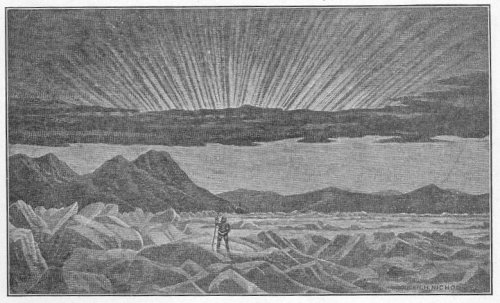Auroras

Drawing of Northern Lights http://www.sacred-texts.com/earth/potp/img/07900.jpg

Since the
first records of the Auroras,
humans have tried to understand
this beautiful phenomena.
The Northern Lights were called
the Aurora Borealis, Greek for
dawn of the north; On the
Southern hemisphere, they are
called the Aurora Australis,
Greek for Southern dawn.
The first written record of auroras appeared in 467 BC. Aristotle a Greek Philosopher, had probably witnessed a rare glimpse of the Auroras over the Mediterranean in the years 349 and 344 BC. He described what he saw in Meterologica : "On a clear night a number of phenomena can be seen that take on the forms of chasms (chasmata) trenches and blood-red colours (Ytter, 45)."
In the first century AD, Seneca, a Roman writer and historian tired to described the auroras in his book Naturales Questiones as follows:
Many kinds of them are seen. There are bothnyi [abysses]: within a surrounding corona
there is a great gap in the sky like a hole dug in a circle. There are pithiai [chasms]:
an enormous round mass of fire, like barrel. Either darts by or blazes in one place. There
are chasmata [chasms]: some area of the sky settles and, gaping in hiding --so to speak--
sends out flames (Ytter, 47).
That last precise descriptions of the auroras appeared in the first century AD, followed by a thousand years of scientific darkness in which people's understanding of natural phenomena was governed by fear, superstition, and peoples ignorance prompted by their religious beliefs in miracles (Ytter, 48).
The first written record of auroras appeared in 467 BC. Aristotle a Greek Philosopher, had probably witnessed a rare glimpse of the Auroras over the Mediterranean in the years 349 and 344 BC. He described what he saw in Meterologica : "On a clear night a number of phenomena can be seen that take on the forms of chasms (chasmata) trenches and blood-red colours (Ytter, 45)."
In the first century AD, Seneca, a Roman writer and historian tired to described the auroras in his book Naturales Questiones as follows:
Many kinds of them are seen. There are bothnyi [abysses]: within a surrounding corona
there is a great gap in the sky like a hole dug in a circle. There are pithiai [chasms]:
an enormous round mass of fire, like barrel. Either darts by or blazes in one place. There
are chasmata [chasms]: some area of the sky settles and, gaping in hiding --so to speak--
sends out flames (Ytter, 47).
That last precise descriptions of the auroras appeared in the first century AD, followed by a thousand years of scientific darkness in which people's understanding of natural phenomena was governed by fear, superstition, and peoples ignorance prompted by their religious beliefs in miracles (Ytter, 48).